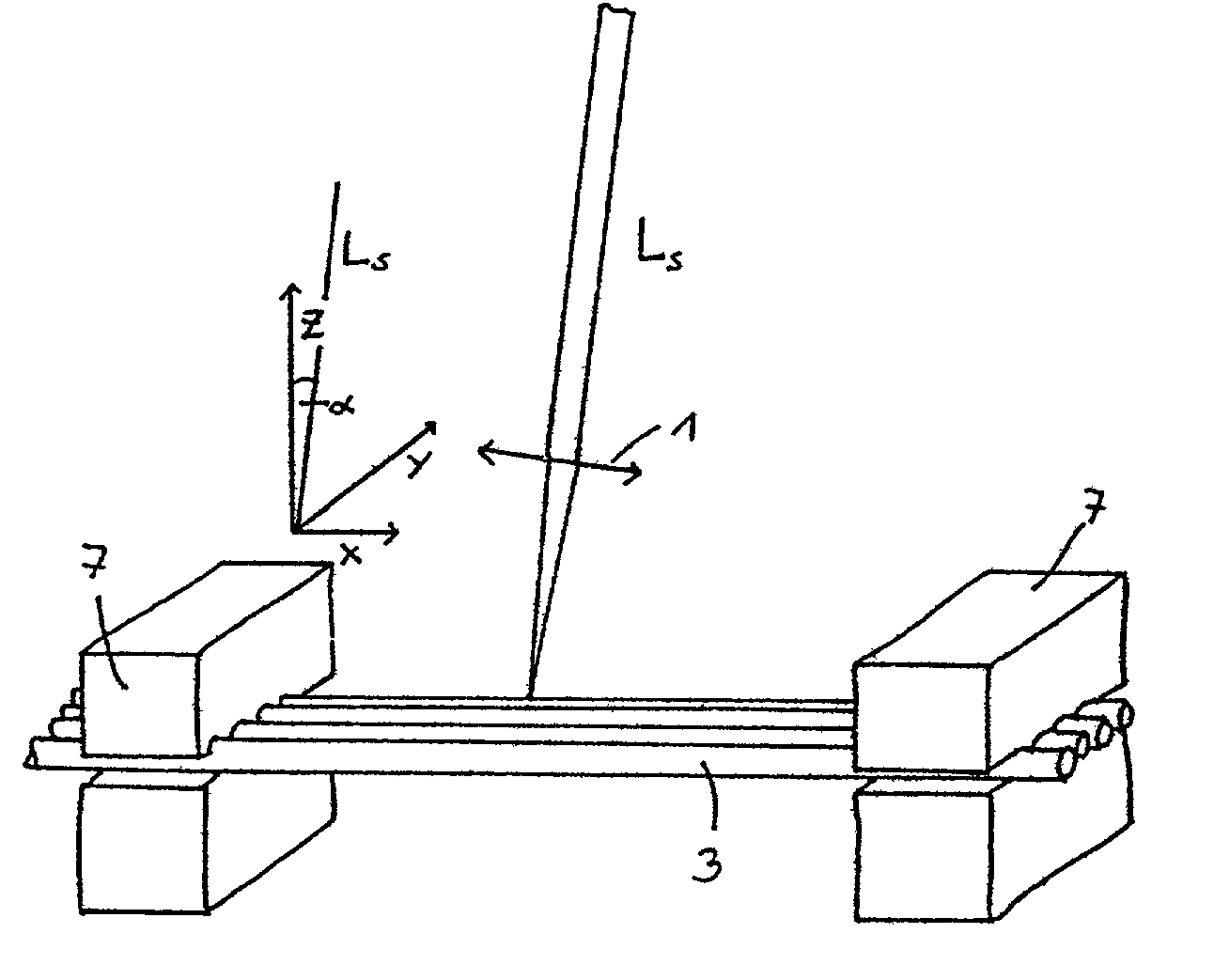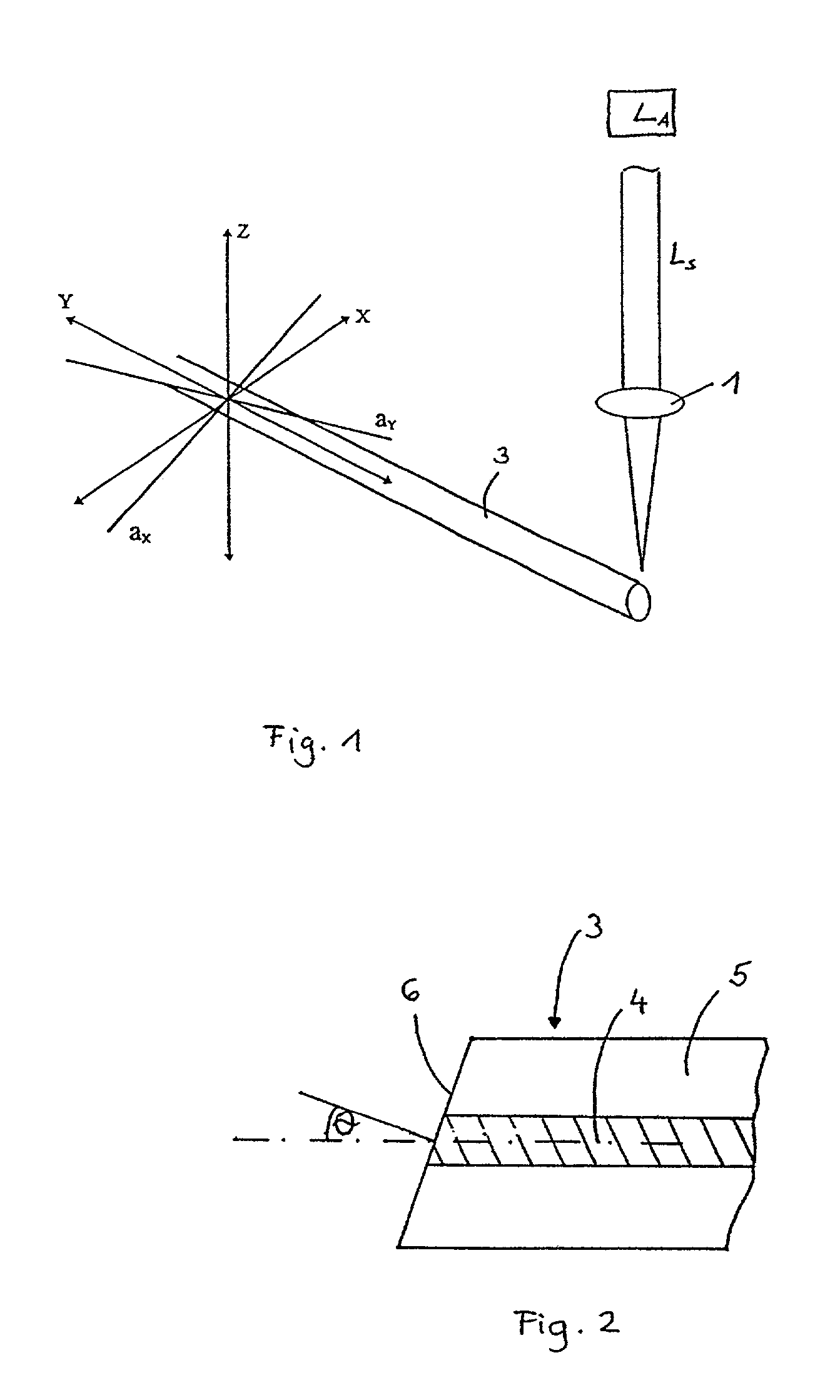Process for cutting an optical fiber
a technology of optical fibers and cutting tools, applied in the direction of cladding optical fibers, manufacturing tools, instruments, etc., can solve the problems of limited flexibility of mechanically cleaving and polishing a fiber, time-consuming and, therefore, expensive approach, etc., to improve the optical coupling performance of the fiber, high degree of control, and unprecedented accuracy
- Summary
- Abstract
- Description
- Claims
- Application Information
AI Technical Summary
Benefits of technology
Problems solved by technology
Method used
Image
Examples
Embodiment Construction
[0021]Referring to FIG. 1, a laser LA from which a laser beam LS issues is initially required for carrying out the process of cutting a fiber 3. The optical fiber 3 is a glass fiber, for example a monomode or multimode fiber. As shown in FIG. 2, the fiber 3 consists of a fiber core 4 and a fiber sheath 5 so that the light is guided substantially in the fiber core 4.
[0022]In general, any laser with a wavelength between 0.1 and 1.5 μm and 8.5 μm to 10 μm can be used for producing the beam for cleaving the fibers. Suitable lasers include, for example, CO2 and excimer lasers, although a CO2 laser is preferred. CO2 lasers have proven particularly advantageous due to the high speed at which they can operate and their resultant cost effectiveness. The fiber material is removed by ablation by the CO2 laser during the cutting process, such that, rather than melting, the glass is sublimated.
[0023]Balancing the objective of delivery high energy to fiber to ablate the glass is the need to minim...
PUM
| Property | Measurement | Unit |
|---|---|---|
| Angle | aaaaa | aaaaa |
| Angle | aaaaa | aaaaa |
| Power | aaaaa | aaaaa |
Abstract
Description
Claims
Application Information
 Login to View More
Login to View More - R&D
- Intellectual Property
- Life Sciences
- Materials
- Tech Scout
- Unparalleled Data Quality
- Higher Quality Content
- 60% Fewer Hallucinations
Browse by: Latest US Patents, China's latest patents, Technical Efficacy Thesaurus, Application Domain, Technology Topic, Popular Technical Reports.
© 2025 PatSnap. All rights reserved.Legal|Privacy policy|Modern Slavery Act Transparency Statement|Sitemap|About US| Contact US: help@patsnap.com



